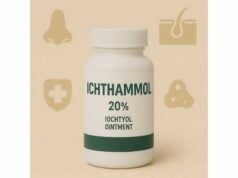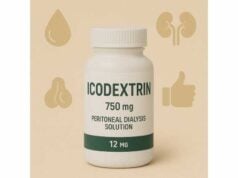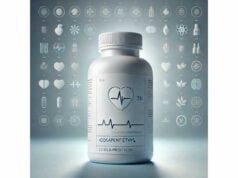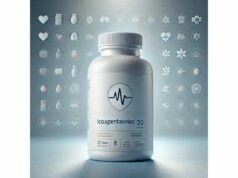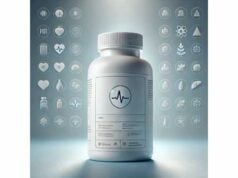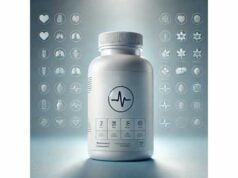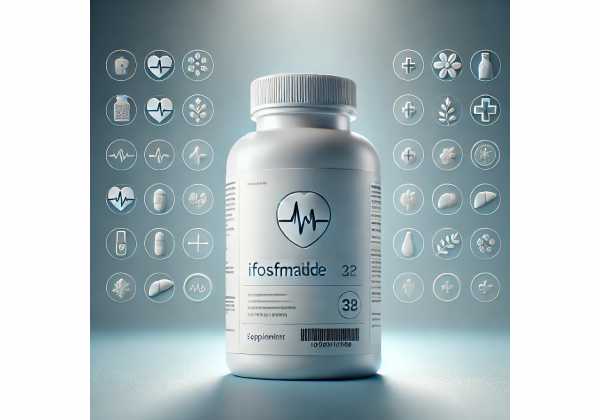
Ifosfamide is a prescription chemotherapy medicine used to treat several solid tumors and lymphomas. It belongs to the oxazaphosphorine class of alkylating agents and must be activated in the liver to work. In modern oncology, ifosfamide is rarely given alone; it is combined with other anticancer drugs and always paired with a uroprotectant (mesna) and aggressive hydration to protect the bladder and kidneys. Its potential benefit is tumor control—shrinking cancer, improving symptoms, and extending survival—balanced against well-known risks like bone-marrow suppression, nausea, hair loss, neurotoxicity, and kidney damage. This guide explains how ifosfamide works, when it is used, how treatment is delivered step by step, typical dosing frameworks, common and serious side effects, and the monitoring that keeps therapy as safe as possible. Use this as a plain-language companion to your oncologist’s plan—not as a substitute for medical advice.
Fast Facts
- Alkylating chemotherapy used for sarcomas, germ cell tumors, lymphomas, and selected solid tumors; always given with mesna and hydration.
- Typical adult schedule: 1.2 g/m²/day intravenously for 5 days, repeated about every 3 weeks; exact regimens vary by cancer and protocol.
- Key risks: bone-marrow suppression, hemorrhagic cystitis, kidney injury (including Fanconi syndrome), encephalopathy; antiemetics and growth-factor support are common.
- Avoid if pregnant or trying to conceive without specialist counseling; discuss fertility preservation before the first cycle.
Table of Contents
- What is ifosfamide and how it works
- Who benefits and when it is used
- How treatment is given: step by step
- Dosing schedules and adjustments
- Side effects, risks, and prevention strategies
- Monitoring, interactions, and when to avoid therapy
What is ifosfamide and how it works
Ifosfamide is a prodrug: it becomes active only after liver enzymes (primarily CYP2B6 and CYP3A4) convert it into cytotoxic metabolites. The key anticancer metabolite forms DNA cross-links inside tumor cells, disrupting replication and triggering cell death. Two other metabolites drive much of the risk profile: acrolein, which can injure the bladder lining, and chloroacetaldehyde, which is associated with neurologic side effects.
Because acrolein concentrates in urine, modern practice always couples ifosfamide with mesna, a uroprotective agent that binds and neutralizes acrolein inside the urinary tract. Adequate hydration and frequent urination are essential partners to mesna. Without that protection, patients face a significant risk of hemorrhagic cystitis—painful, sometimes bleeding, bladder inflammation.
Ifosfamide is versatile and appears in many combination regimens. In soft-tissue sarcomas, it is commonly paired with agents like doxorubicin or given in high doses for specific subtypes. In germ cell tumors, it may be part of third-line combinations. Pediatric oncologists also use it in certain sarcomas and other childhood cancers with carefully adapted dosing and surveillance.
The benefits of ifosfamide are measured per cancer type: tumor shrinkage, longer time before progression, or improved overall survival when used with other drugs. These gains come with predictable toxicities. The art of using ifosfamide is to balance tumor control against side effects through premedication, supportive care, and diligent monitoring.
Who benefits and when it is used
Sarcomas (soft-tissue and bone). Ifosfamide is a backbone drug in several sarcoma regimens. In adults with high-grade soft-tissue sarcoma, it may be used up front with other agents or later if disease progresses. For bone sarcomas, selected subtypes (such as Ewing sarcoma) can include ifosfamide-based combinations depending on protocol and prior therapy. High-dose schedules are sometimes chosen for chemosensitive histologies in experienced centers.
Germ cell tumors. In testicular cancer, ifosfamide appears in third-line or “salvage” regimens when tumors resist or relapse after initial platinum-based chemotherapy. Here the goal may be cure in a subset or meaningful disease control when cure is less likely. Because these regimens are intensive, they are delivered in centers accustomed to high-risk supportive care.
Lymphoma and other solid tumors. Certain non-Hodgkin lymphomas, sarcomatoid variants, and rare solid tumors may include ifosfamide in multi-drug plans. The decision reflects the tumor’s sensitivity profile, prior treatments, and patient factors such as kidney function and baseline neurologic status.
Pediatrics. Children may receive ifosfamide for rhabdomyosarcoma, Ewing sarcoma, and other malignancies under pediatric protocols. Dosing, hydration, and toxicity thresholds are tailored to age and weight, with special vigilance for kidney injury and electrolyte disturbances.
Who is a good candidate? Patients with adequate bone-marrow reserve (sufficient white cells, hemoglobin, and platelets), acceptable kidney and liver function, and no uncontrolled infections or active bleeding risks. Because the drug can impair fertility, discussions about sperm banking or oocyte/embryo cryopreservation typically happen before the first infusion. If prior therapies already caused significant neuropathy, kidney damage, or bladder inflammation, clinicians may adjust plans or select alternatives.
Realistic goals. Ifosfamide is rarely curative by itself; it is one tool in a broader strategy. Benefits range from shrinking measurable disease to easing symptoms and enabling surgery or radiation. For some patients, particularly with chemosensitive histology and intact organ function, ifosfamide-containing regimens can produce durable remissions. Others may experience partial responses or disease stabilization that buy time and quality of life.
How treatment is given: step by step
- Pre-treatment evaluation. Before the first cycle, your team reviews medical history, prior treatments, allergies, and medications. Baseline tests include a complete blood count (CBC), comprehensive metabolic panel (with creatinine, electrolytes, and liver enzymes), urinalysis (checking for blood and protein), and pregnancy testing when relevant. Many centers assess hearing, heart function, and fertility considerations depending on the plan.
- Access and premedications. Ifosfamide is given intravenously through a peripheral IV or, more often for multi-day regimens, a central line or port. Standard premedications include antiemetics (to prevent nausea and vomiting). If growth-factor support (G-CSF) is planned, it usually starts 24–72 hours after the last chemotherapy dose.
- Hydration protocol. You receive vigorous IV fluids before and during ifosfamide. The goal is to maintain high urine output to dilute urinary metabolites and protect the bladder and kidneys. Your team will ask you to void frequently; some regimens include diuretics if output lags. Rare inpatient protocols use continuous bladder irrigation when risk is extreme.
- Mesna uroprotection. Mesna is mandatory with ifosfamide. It binds acrolein in urine to prevent hemorrhagic cystitis. Hospitals administer mesna intravenously on a schedule tied to each ifosfamide dose; outpatient plans may mix IV and oral mesna. You will continue mesna coverage for hours after the last ifosfamide dose to match the time window when acrolein is excreted.
- Ifosfamide infusion. Typical infusions last at least 30 minutes and may be longer; some protocols use continuous infusions. Treatment often spans several days in a row. Nursing teams monitor for infusion reactions, neurocognitive changes, and urine abnormalities.
- During-cycle monitoring. Daily weights, input/output totals, and spot urine checks help catch early bladder irritation or kidney stress. Nurses also screen for confusion, hallucinations, or unusual sleepiness—early clues of ifosfamide-related encephalopathy.
- After the cycle. Expect a blood-count nadir roughly 7–14 days after starting treatment, with recovery by about 3 weeks if marrow reserve is intact. You will have labs at least weekly, sometimes more often, to decide when the next cycle can safely begin. Call your team urgently for fever (typically ≥38.0°C), bleeding, decreased urination, persistent vomiting, new confusion, or severe fatigue.
- Supportive care at home. Drink plenty of fluids unless restricted, take antiemetics exactly as prescribed, and follow hygiene and food-safety precautions when your white blood cells are low. Avoid new over-the-counter supplements without approval—some interact with liver enzymes that activate ifosfamide.
This cycle repeats every 2–4 weeks depending on regimen, response, and recovery from side effects. Imaging and tumor markers, when relevant, are checked on a schedule to assess benefit.
Dosing schedules and adjustments
Typical adult reference schedule. A commonly cited regimen gives 1.2 g/m²/day intravenously for 5 consecutive days, repeated approximately every 3 weeks or after blood-count recovery. Many other schedules exist: some give higher daily doses over fewer days, some use continuous infusions, and others combine ifosfamide with multiple agents on alternating days. Your dose depends on cancer type, prior treatments, body surface area, organ function, and the specific protocol your team follows.
Mesna dosing frameworks. Mesna doses are calculated relative to ifosfamide. Hospitals often use IV mesna equal to 60% of the daily ifosfamide dose divided into three doses (at the time of ifosfamide and 4 and 8 hours later). Mixed IV/oral schedules may total 100% of the ifosfamide dose across the day. These are examples—your center’s protocol may differ—yet the principle is constant: continuous bladder protection during and after ifosfamide exposure.
Hydration targets. Many protocols aim for high urine output throughout therapy and for at least 24 hours after the last dose. You may receive scheduled IV fluids and be asked to drink extra at home if safe for your heart and kidneys.
Dose modifications. Clinicians commonly adjust the next cycle based on:
- Blood counts: depth and duration of neutropenia or thrombocytopenia.
- Kidney function: rising creatinine, electrolyte wasting, or signs of Fanconi-type tubulopathy (e.g., glycosuria with normal blood glucose, low phosphate).
- Neurologic effects: encephalopathy may lead to dose reduction, longer infusion times, or a switch to alternative drugs.
- Bladder toxicity: hematuria or dysuria despite mesna/hydration triggers evaluation and may pause therapy.
Special populations.
- Children: weight- and surface-area–based dosing with strict renal/electrolyte monitoring.
- Older adults: more conservative dosing if frail, with extra attention to kidney reserve and delirium risk.
- Renal or hepatic impairment: cautious initiation, slower infusions, and lower cumulative doses may be chosen; some patients are not candidates if organ function is severely reduced.
- Prior platinum exposure: combined kidney risk (especially with cisplatin) can influence the decision to use ifosfamide or the chosen dose.
How long is treatment? It varies—some plans use 4–6 cycles, others more or less depending on response, tolerance, and the goals of care. Your oncologist will revisit risk–benefit after each cycle.
Side effects, risks, and prevention strategies
Very common and expected
- Bone-marrow suppression. Low white cells (neutropenia), platelets (thrombocytopenia), and hemoglobin (anemia). Prevention includes growth-factor support when indicated, infection precautions, and transfusions when necessary. Fever during neutropenia is a medical emergency.
- Nausea and vomiting. Modern antiemetic plans (often a 5-HT3 antagonist plus other agents) prevent or blunt symptoms in most patients.
- Hair loss and fatigue. Temporary hair loss is common; energy typically improves as counts recover between cycles.
Organ-specific risks and what teams do about them
- Bladder toxicity (hemorrhagic cystitis). Caused by acrolein irritating the bladder. Prevention is mesna plus high urine output. Report burning, urgency, visible blood, or pelvic pain immediately.
- Kidney injury. Ifosfamide can cause tubular damage, sometimes leading to a Fanconi syndrome pattern (wasting of phosphate, potassium, bicarbonate; glycosuria with normal blood glucose). Monitoring includes creatinine, electrolytes, phosphate, bicarbonate, and urinalysis. Early electrolyte replacement can prevent complications; severe cases may be prolonged.
- Neurotoxicity (encephalopathy). Ranges from mild confusion or insomnia to agitation, hallucinations, or somnolence. It tends to occur within days of dosing and usually reverses after stopping therapy, though severe cases can be dangerous. Risk rises with high doses, low albumin, kidney dysfunction, or interacting drugs. Hospitals treat supportively; some centers use methylene blue under specialist supervision.
- Liver enzyme elevations. Typically mild and transient; significant dysfunction may prompt dose changes.
- Cardiac effects at high cumulative doses. Rare with standard dosing but part of overall risk assessment.
Fertility and reproductive health
- Gonadotoxicity. Risk of reduced sperm counts or premature ovarian insufficiency. Discuss preservation options (sperm banking, egg or embryo freezing) before starting therapy whenever possible.
- Pregnancy and breastfeeding. Ifosfamide can harm a developing fetus and should not be used during pregnancy unless potential benefit justifies risk under specialist oversight. Effective contraception for patients who could become pregnant and for partners of patients receiving therapy is essential during treatment and for a period after the last dose as advised by your oncology team. Breastfeeding is not recommended during and shortly after therapy.
Secondary cancers. As with many alkylating agents, there is a small long-term risk of secondary malignancies (for example, therapy-related leukemia). That risk is weighed against the immediate danger posed by the primary cancer.
When to call urgently
- Fever, shaking chills, or feeling very unwell.
- Blood in urine, severe burning with urination, or inability to pass urine.
- New confusion, hallucinations, or severe sleepiness.
- Severe vomiting or diarrhea causing dehydration.
- Uncontrolled bleeding or new, extensive bruising.
Most side effects are manageable when caught early. Never hesitate to contact your care team—early action prevents complications and keeps you on track.
Monitoring, interactions, and when to avoid therapy
Monitoring that keeps treatment safe
- Before each cycle: CBC; kidney function (creatinine, urea), electrolytes (including phosphate, bicarbonate), liver enzymes; urinalysis for blood/protein; pregnancy test when applicable.
- During multi-day dosing: daily weights, strict intake/output, spot urinalysis, symptom checks for bladder irritation and neurocognitive changes.
- After each cycle: blood-count nadir checks and chemistry panels; review of symptoms and any hospital or urgent visits.
Drug and supplement interactions (high-yield)
- Cytochrome inducers/inhibitors. Ifosfamide activation depends on liver enzymes. Strong inducers or inhibitors can shift exposure to active or toxic metabolites. Always provide a full list of prescription drugs, over-the-counter medicines, and supplements.
- Other nephrotoxins. Aminoglycosides, amphotericin B, high-dose diuretics, and cisplatin increase kidney risk; your oncologist coordinates timing or substitutes alternatives.
- Antiemetic and CNS-active drugs. Sedatives, benzodiazepines, or opioids may cloud the picture if neurotoxicity appears; dosing is streamlined to the minimum effective regimen.
- Vaccines. Live vaccines are avoided during chemotherapy and for a period afterward; inactivated vaccines may be given on a schedule your team recommends.
Who should not receive ifosfamide (or needs major caution)
- Uncontrolled active infection or severe bone-marrow suppression before the first dose.
- Significant renal impairment not correctable with supportive care, especially when combined with prior nephrotoxic therapy.
- History of severe ifosfamide encephalopathy on earlier exposure.
- Pregnancy without a compelling, specialist-justified indication and multidisciplinary oversight.
- Inability to receive mesna or adhere to hydration and monitoring, which are non-negotiable safety components.
Shared decision-making. Ifosfamide can be life-extending or curative in the right setting. The same drug can cause serious harm if used without the safeguards outlined here. Your oncologist will discuss alternatives, expected benefits, and tailored risk-reduction strategies so you can make an informed choice that aligns with your goals.
References
- IFOSFAMIDE injection 2025 (Prescribing Information)
- Ifosfamide – StatPearls 2025 (Review)
- Label: MESNA injection, solution 2024 (Prescribing Information)
- Ifosfamide as a Cause of Fanconi Syndrome 2022 (Case Review)
- Label: IFEX- ifosfamide injection, powder, for solution 2024 (Prescribing Information)
Disclaimer
This article is educational and does not replace advice from your oncology team. Ifosfamide is a high-risk medication that should be used only under the supervision of qualified cancer specialists with appropriate monitoring, mesna protection, and hydration protocols. Call your care team urgently for fever, bleeding, confusion, blood in urine, severe vomiting or diarrhea, or decreased urination. Discuss fertility preservation and reliable contraception before starting therapy, and do not start new medicines or supplements without oncology approval.
If this guide helped you, please consider sharing it on Facebook, X (formerly Twitter), or your preferred platform, and follow us for more evidence-based cancer care explainers. Your support helps us keep creating high-quality, people-first content.

